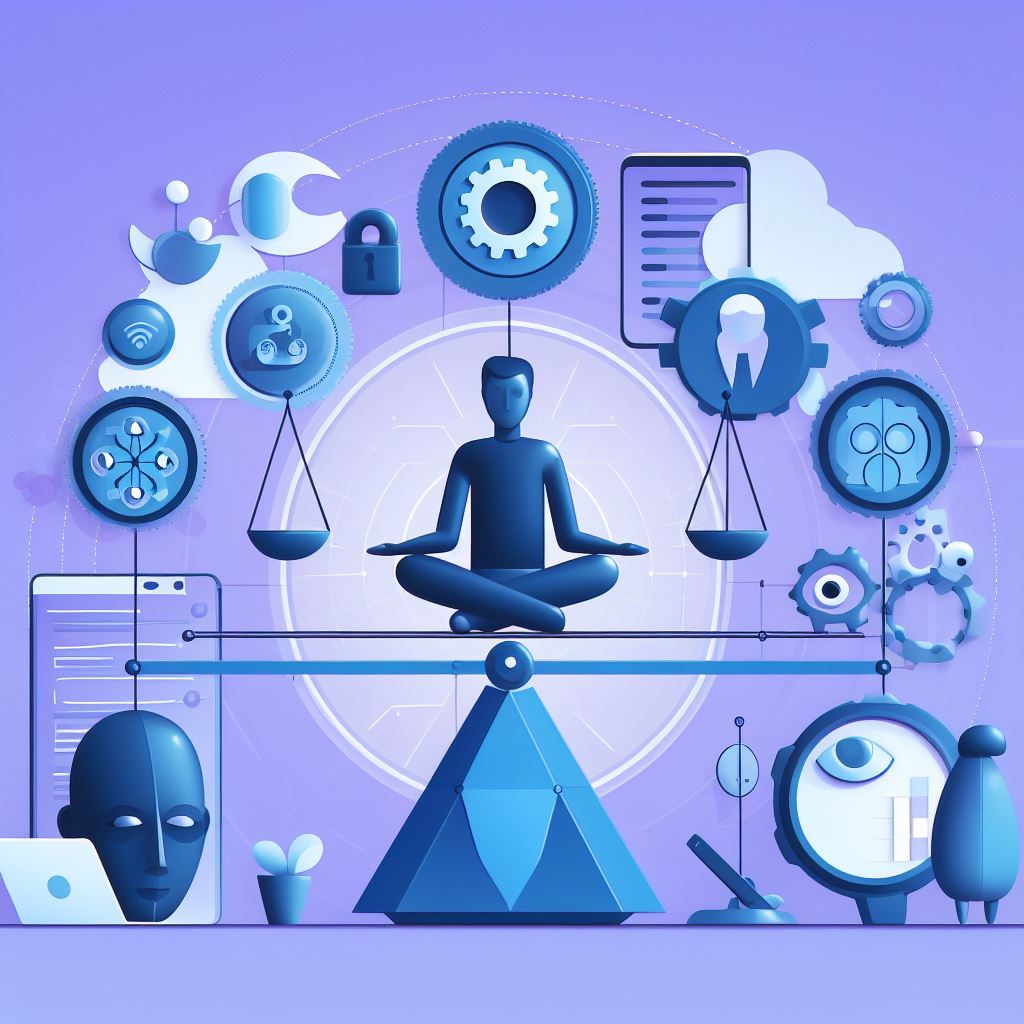I will write in the future a lot about AI and ML with focus on cybersecurity. I will mix AI and ML and other terms quite a lot, so I think it is necessary to have a base from where to start.
For this reason, I created this page with the basics. I don’t want to copy too much from the web, but here are some excerpts from Google Cloud. Because I want to be politically correct and vendor neutral, I have added the links from the competitors as well.
ALL materials are good, I just chose these because they came first in my search on Google (No surprize here).
What is Artificial Intelligence (AI)?
Artificial intelligence is a broad field, which refers to the use of technologies to build machines and computers that have the ability to mimic cognitive functions associated with human intelligence, such as being able to see, understand, and respond to spoken or written language, analyze data, make recommendations, and more. Although is often thought of as a system in itself, it is a set of technologies implemented in a system to enable it to reason, learn, and act to solve a complex problem.
What is machine learning (ML)?
Machine learning is a subset of artificial intelligence that automatically enables a machine or system to learn and improve from experience. Instead of explicit programming, machine learning uses algorithms to analyze large amounts of data, learn from the insights, and then make informed decisions. Machine learning algorithms improve performance over time as they are trained—exposed to more data. Machine learning models are the output, or what the program learns from running an algorithm on training data. The more data used, the better the model will get.
AI vs. ML
AI and ML are two related but distinct fields of computer science that aim to create machines or systems that can perform tasks that normally require human intelligence or learning. AI stands for artificial intelligence, which is the broader concept of machines being able to carry out tasks in a way that we would consider smart.
Some examples of AI and ML in real life are:
- Speech recognition: AI and ML enable devices or applications to understand and respond to human speech. For example, voice assistants like Cortana, Siri, or Alexa use speech recognition to interact with users.
- Image recognition: AI and ML enable systems to identify and classify objects or faces in images or videos. For example, face recognition is used to unlock smartphones, tag friends on social media, or verify identities.
- Natural language processing: AI and ML enable systems to analyze and generate natural language texts. For example, Bing can translate texts from one language to another, summarize articles, or generate captions for images.
- Recommendation systems: AI and ML enable systems to suggest products, services, or content that match the preferences or interests of users. For example, Netflix can recommend movies or shows based on the user’s viewing history, Amazon can recommend products based on the user’s purchase history, or Spotify can recommend songs based on the user’s listening history.
- Self-driving cars: AI and ML enable vehicles to drive autonomously without human intervention. For example, Tesla, Waymo, or Uber are developing self-driving cars that can navigate complex road environments, avoid obstacles, and follow traffic rules.
AI and ML are transforming various aspects of our lives, from entertainment to education, from health care to security, from business to art. They have the potential to solve many challenging problems and create new opportunities for human society.
So, what’s the difference?
If you read until here, you realized that there is no way to differentiate them exactly. AI uses ML to do “smart things”.
Think of AI as the general goal of creating intelligent machines, while ML is one of the methods or techniques to achieve that goal.
Another way to differentiate AI from ML is to look at the types of problems they solve.
AI can solve tasks that require human cognition, such as reasoning, planning, decision making, natural language processing, computer vision, and robotics.
ML can solve tasks that require learning from data, such as classification, regression, clustering, anomaly detection, and recommendation systems.
Which one is used in Cybersecurity ?
Both AI and ML are used in cybersecurity, but ML is more prevalent and relevant as a subset of AI that focuses on creating systems that can learn from data and improve their performance without being explicitly programmed.
ML can solve tasks that require learning from data, such as classification, regression, clustering, anomaly detection, and recommendation systems.
To which one do we refer when we write together “AI” and “Cybersecurity”?
This is a good question…
To be pragmatic, I think we can safely say that we are thinking more at ML.
Read more
https://cloud.google.com/learn/artificial-intelligence-vs-machine-learning
https://aws.amazon.com/compare/the-difference-between-artificial-intelligence-and-machine-learning/
© Copyright 2023 Sorin Mustaca, All rights Reserved. Written For: Sorin Mustaca on Cybersecurity
Check www.endpoint-cybersecurity.com for seeing the consulting services we offer.
Visit www.itsecuritynews.info for latest security news in English
Besuchen Sie de.itsecuritynews.info für IT Sicherheits News auf Deutsch


